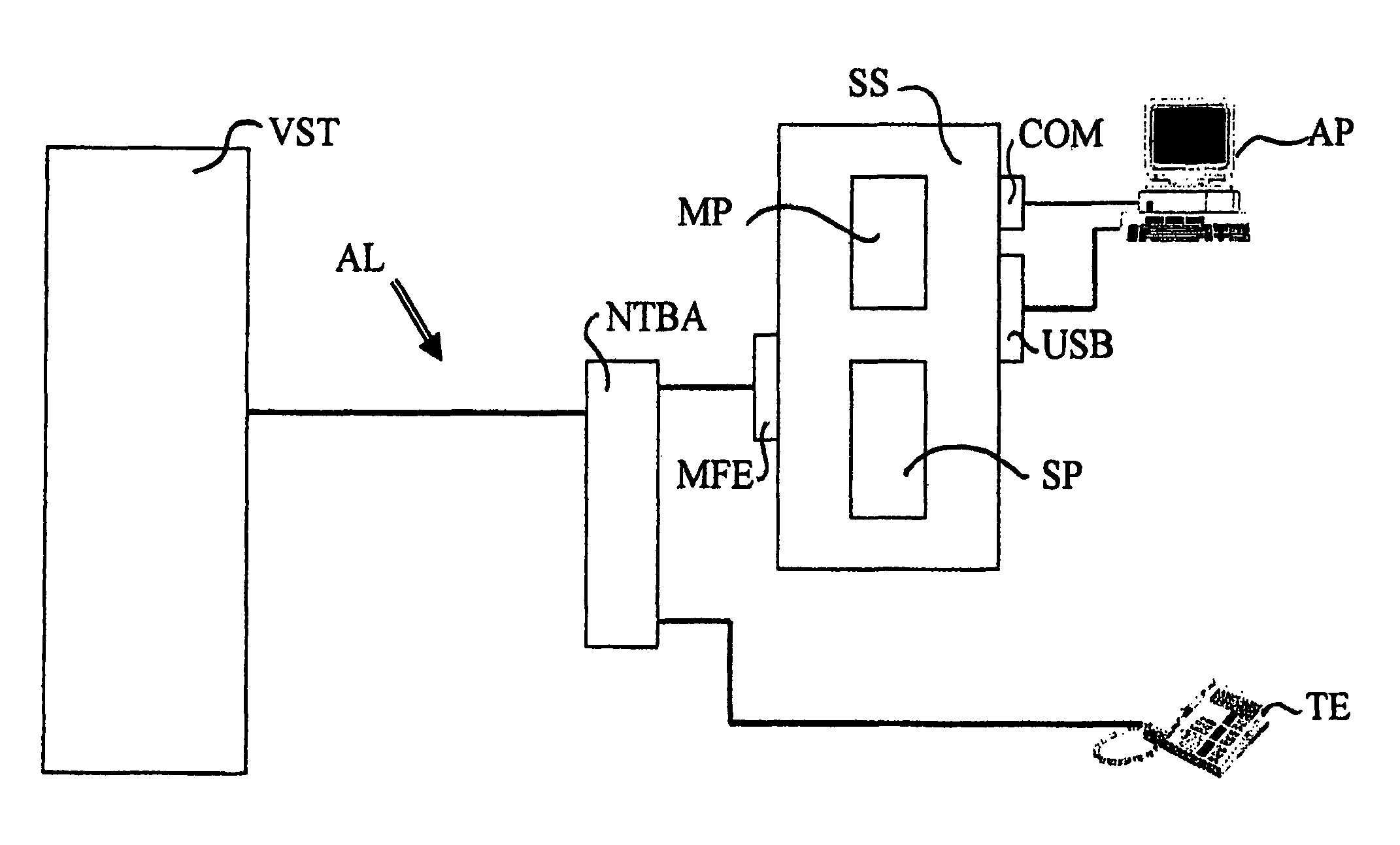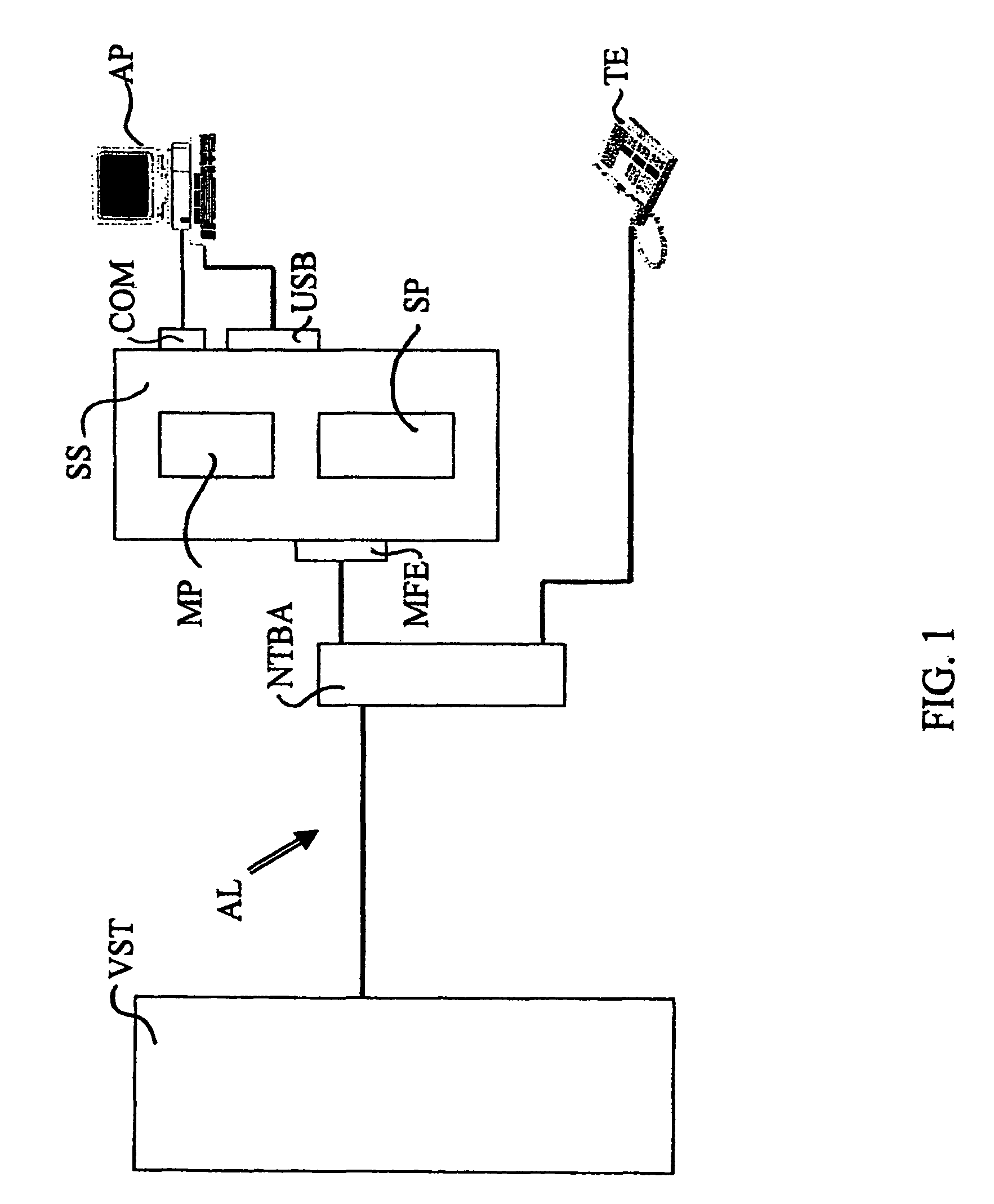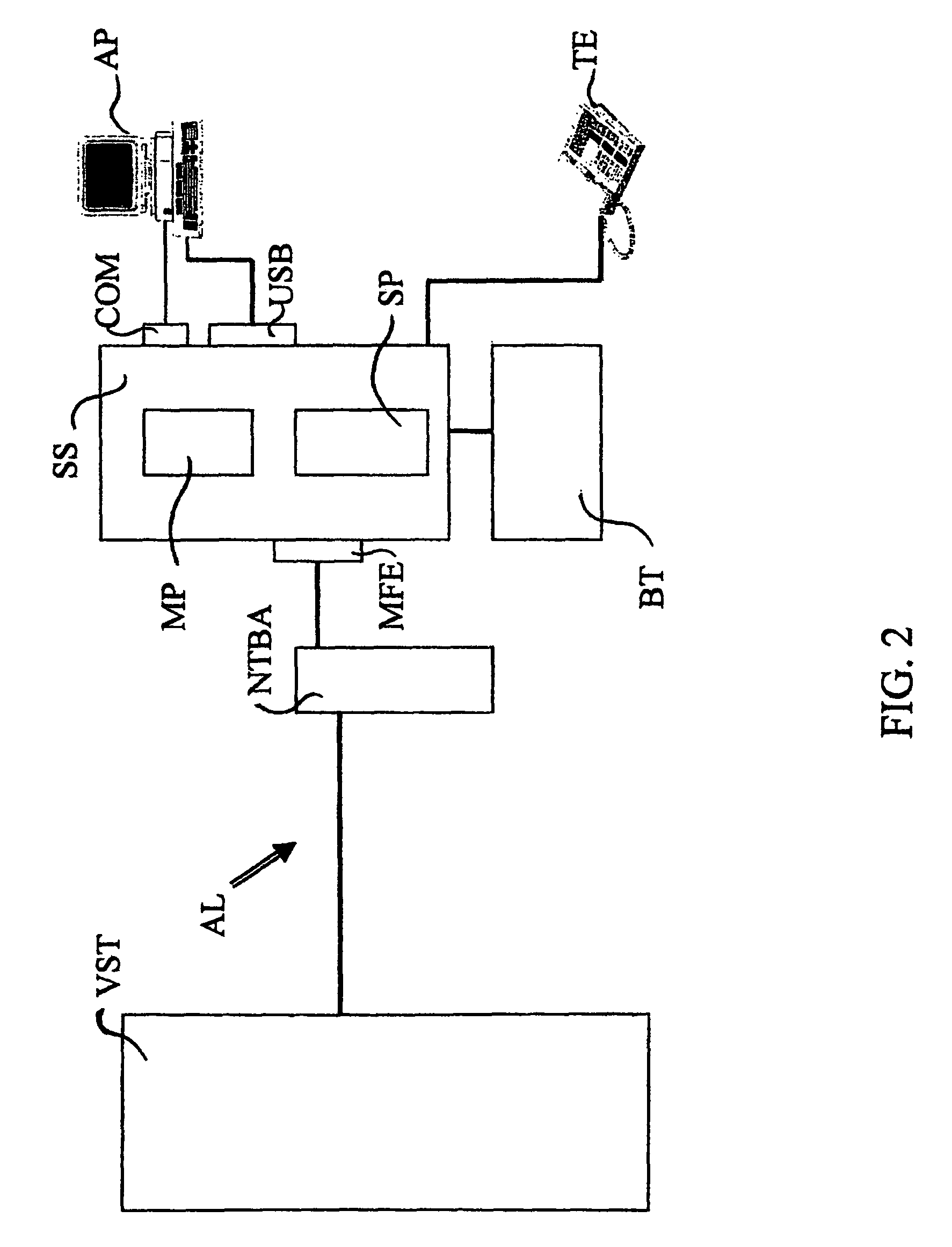[0027]Testing of the bandwidth available at a telecommunication device as such is well known. For example, a
facsimile device is known from DE 197 13 946 A1, which is able to increase the efficiency and reliability of communications by determining, based on a
retransmission condition or conditions which are known through a transmission
station or receiving station, whether or not the
transmission rate must be reduced and a
retransmission is continued. Moreover, the
facsimile device is able to reduce the
transmission rate appropriately in order to reduce errors and improve the efficiency and reliability of communications. For this purpose, the
facsimile device is equipped with a modem, which is able to determine the transfer rate for image data communication in compliance with the
transmission quality of a communication circuit or line. Further to that, the facsimile device uses a protocol that enables the
transmitter side or the
receiver side to perform a decrease procedure to reduce the transfer rate at the start of a
control channel used to enable the
transmitter side and the
receiver side to exchange control signals. The control signals comprise an error frame
retransmission function and follow a
primary channel that is allocated to a data communication. Specifically, the facsimile device is equipped with a transfer rate detection function in order to detect the transfer rate at the time of the retransmission of an error frame, a counter function for counting the number of retransmission processes taking place at the same transfer rate, a determination function in order to determine whether or not the retransmission processes which took place at the same transfer rate have been repeated at a frequency corresponding to a pre-selectable number, and a
control function to execute the decrease process, if the retransmission processes at the same transfer rate has been repeated corresponding to the pre-selectable number of times. Moreover, a frame quantity detection function is planned, in order to detect the number of frames every
time error frames are retransmitted. Based on a G3 standard transmission control process, the facsimile device is equipped with a switching
condition monitoring function, in order to monitor a switching condition or a line condition during an acknowledgment or during the reception of image data, as well as a date
change request function. In this way, the receiving side can be prompted to transmit a
signal following or during the reception of a page of image data, which serves the purpose of requesting a decrease or increase of the
transmission rate on the basis of switching conditions or line conditions, which are being monitored by the switching
condition monitoring function. Specifically, the switching
condition monitoring function monitors the switching condition or line condition in terms of the EQM-value, and the
rate change request function request a rate decrease when the EQM-value increases, and requests a rate increase when the EQM-value decreases. Finally, the facsimile device features a table, which lists the EQM-values and transmission rates in a ratio of one-to-one.
[0037]The method of the present invention has the
advantage that a uniform connection for the purpose of testing the connection line, in particular for the determination of available bandwidth, is provided. Due to the fact that the test is performed automatically, the teacher and the students are relieved from testing the available bandwidth during start-up or operation. The test does not even have to be performed on-site, but can be implemented anywhere within the system from any location.
[0040]In comparison to state-of-the-art electronic teaching systems, the teaching system of the present invention offers the
advantage that an expensive preliminary installation is not required, that the interface circuit enables a simple expansion or modification of the teaching system, including the establishment of new user groups and a significant expansion of the area of application and that, in particular, the connection of a new student to the teaching system can be accomplished immediately and even by an untrained user. The interface circuit of the present invention offers the
advantage of enabling, in a surprisingly simple fashion, an individual conception of the virtual electronic teaching system by the user. In comparison to state-of-the-art systems, the user himself “designs” the virtual electronic teaching system in accordance with his requirements by means of menu-driven programs, so that the
software functions are not limited and the manufacturer of the interface circuit of the present invention does not have to—in consideration of a in interface circuit that can be used as soon as possible for any purpose—make a selection between associated functions.
[0041]Furthermore, it is advantageous in that a decentralized control of a testing process running on the
workstation is made possible. It is also possible, from any point of the telecommunication network, to perform the tests by means of PC /
web server or mobile measuring point (
GSM or, in case of higher bandwidths, UMTS), where the
network connection may also be accomplished via an IP interface (including packet-switched network). If applicable, data serving the purpose of testing and maintenance of a
workstation may also be changed in this way. If the commands are transmitted from a central
workstation (teacher), a particularly powerful method for the introduction of new functions or modification of existing functions is available, since the changes need only be made at the central workstation rather than at all individual workstations. Moreover, the results are available to teaching personnel immediately after completion of the test. Based on this, further decisions can be taken quickly, or further connections can be communicated.
[0043]This further development of the invention is advantageous in that the test or maintenance can only be performed by personnel appointed to the task. It is also possible to assure access to certain groups of processes by means of various access codes, in order to limit responsibilities or distribute responsibilities differently within personnel. For example, it is possible to form CUG (closed user groups) via ISDN, so that the previously used method of return call numbers may be omitted and, for example, a
dislocation of the interface circuit does not result in a
software change.
 Login to View More
Login to View More  Login to View More
Login to View More 


